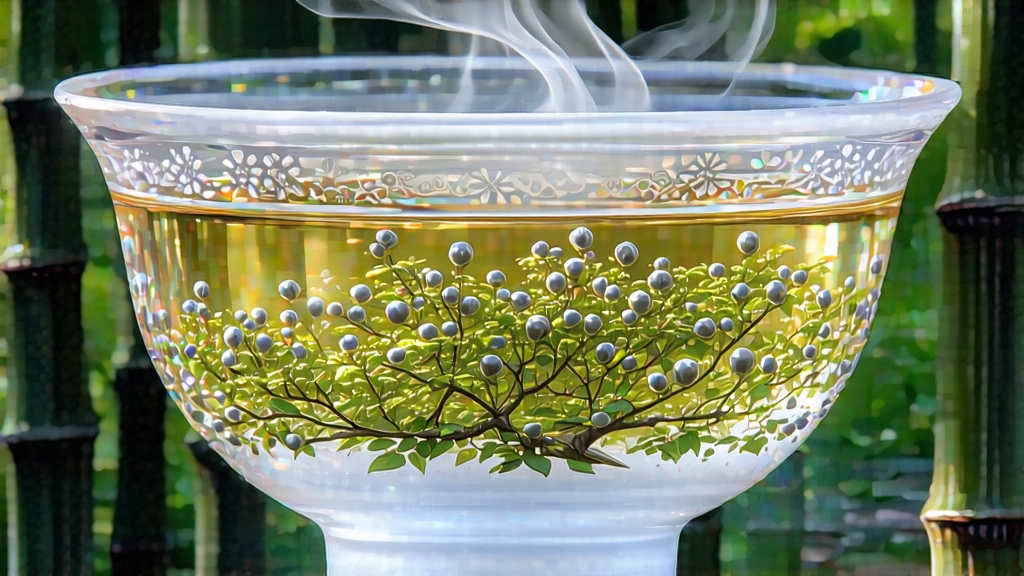
White tea is the most minimally handled of all China’s six great tea families, and within that quiet realm White-Hair Silver Needle (Bai Hao Yin Zhen) stands as the purest, most luminous expression of leaf and time. To the uninitiated it can look almost too delicate to be tea—slender, silvery spears that seem closer to artisanal needles than agricultural produce—yet each bud carries centuries of Fujian mountain air, sea mist, and the restrained wisdom of farmers who believe the best craft is the least craft. This article invites the international reader into the hushed world of Silver Needle, tracing its historical footsteps, the micro-geographies that shape it, the almost invisible processing that nevertheless decides its fate, and the gentle rituals that coax its famously “liquid moonlight” liquor into the cup.
-
Historical whispers
The first verifiable record of “silver needle” appears in a 1796 county gazetteer from Zhenghe, northern Fujian, where local officials listed it among tribute teas sent to the imperial court. Legends push the story further back: Song-dynasty tea bricks stamped with silver-flecked buds, or Tang poets praising “white down floating on jade broth.” What is certain is that by the late Qing the tea had become a currency of diplomacy; in 1891 a small chest was presented to the British royal family and pronounced “too subtle for London water,” thereby sealing its exotic reputation. Modern China still gifts the finest lots to foreign dignitaries, so in a sense every sip continues a 230-year-old political conversation conducted in aroma rather than words. -
Terroir: two counties, two personalities
Authentic Silver Needle is produced only in Fujian province, and only from two protected micro-zones: Fuding in the northeast and Zhenghe in the interior. Fuding sits on red granite soil washed by East-China-Sea fog; its buds grow plump quickly, yielding a tea that is peach-sweet, slightly marine, with a cool menthol finish. Zhenghe, higher and more continental, has yellow loam and cooler nights; buds mature slowly, building thicker cell walls that translate into jasmine-honey depth and a velvet texture. Connoisseurs speak of “Fuding elegance” versus “Zhenghe muscle,” yet both share the law that only the March sprout—before Qingming festival—qualifies for top grade. One week earlier and the down is too thin; one week later and the blade begins to unfurl, forfeiting needle status. -
The invisible craft: two steps and a sigh
Once picked, the buds are laid on bamboo trays no thicker than one finger-width. For 36 to 48 hours they rest in a shaded pavilion whose walls are made of adjustable louvers; the goal is to let moisture leave the leaf as slowly as breath leaves a sleeping child. No pan-firing, no rolling, no shaking—only the whisper of mountain air. When the bud’s moisture drops to 8–10 %, a final 20-minute bake at 40 °C sets the aromatics. That is the entire process: wither, bake, sort. Yet within that simplicity lurk a thousand ways to fail. Too much wind and the down oxidizes to an unattractive ochre; too little and the tea becomes sour hay. Masters gauge progress by touch—when a bud snaps between forefinger and thumb with the sound of fresh celery—and by listening to the tray: a faint crackle means cellular rupture is beginning, the cue to move the tea into the bake. -
Grading the moonlight
Chinese export standards recognize three grades: Supreme, Special, and First. Supreme must be 100 % unopened bud, uniformly 2.5–3 cm long, covered so thickly in trichomes that they glitter under a 40-watt bulb. When dropped on a porcelain plate the buds should stand on their bases like miniature ivory obelisks. Special allows 5 % slight leaf opening, while First may contain 10 %. International buyers often encounter “Tippy White” or “Bai Hao” labels; these are usually blends of lower-grade Fujian white or even Yunnan varietals, serviceable but lacking the cool, shimmering length of true Silver Needle. -
Brewing: the art of restraint
Silver Needle is not a tea that shouts; it murmurs, and the brewer